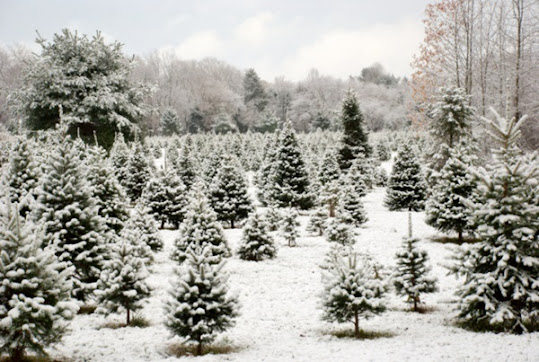Given the situation the entire planet is in, the real moral of the season is to be optimistic in this moment of despair". To be able to measure the circumference of the tree and how it can fit as it is brought around be sure to carry a tape measure when buying the Christmas tree.
The Different Trees
There are two things to note while picking a Noble Fir, however, as this tree has very sharp needles. The branches of the Noble Fir are very stiff and sturdy, making baubles and heavier decorations simple to view. When choosing the right tree, the Noble Fir sits comfortably in the centre, and these are trees which grow faster than the Nordmann Fir, but not as fast as the Norwegian Spruce. It is also not as expensive, and it does not take as long to prune. They also have a very peculiar smell that can be either loved or disliked. Therefore, these trees can either be seen inside the house or outside, depending on the owner's preference.The Nordmann Fir Christmas Tree
The Nordmann Fir is the most common tree currently chosen while looking for the ideal tree. These are most commonly chosen because unlike the Norwegian spruce, the needles don't break. In addition, as this tree is very symmetrical when born, this tree often exudes beauty. Due to the foliage, another explanation why this tree is so common is. The leaves are gentle and smooth. This form often grows very slowly and needs more pruning, apart from that.The Norway Spruce Christmas Tree
A ton has been selected for The Spruce of Norway, as it is considered a lovely soft oak. There are really fine needles in the tree and it is characterized as really very bushy. There are several divisions as well, because you can put a lot of lighting on them. The cheerful mood that the holidays bring is also to be celebrated. It's going to be absolutely gorgeous, and the real highlight is that it smells lovely. And contribute to the home's more festive atmosphere.Norway's spruce grows faster than the majority of the population. It is known that these trees are among the cheapest trees on the market. The trademark that people have noticed so much of it, however is that the needles fell. Needles, of course, linger for two-three years on the branch. They should be caused by natural causes if the needles appear to fall off, and one must not be scared.
For all the choices open, it will always be up to the homeowner to pick the chosen tree. Nevertheless, bear in mind the real explanation for the season. When everyone begins to sound like it is in place, with an optimistic spirit, we can start celebrating the season. Over the years, this will not be as festive and lucrative as the last celebration, but hope can never waver.















